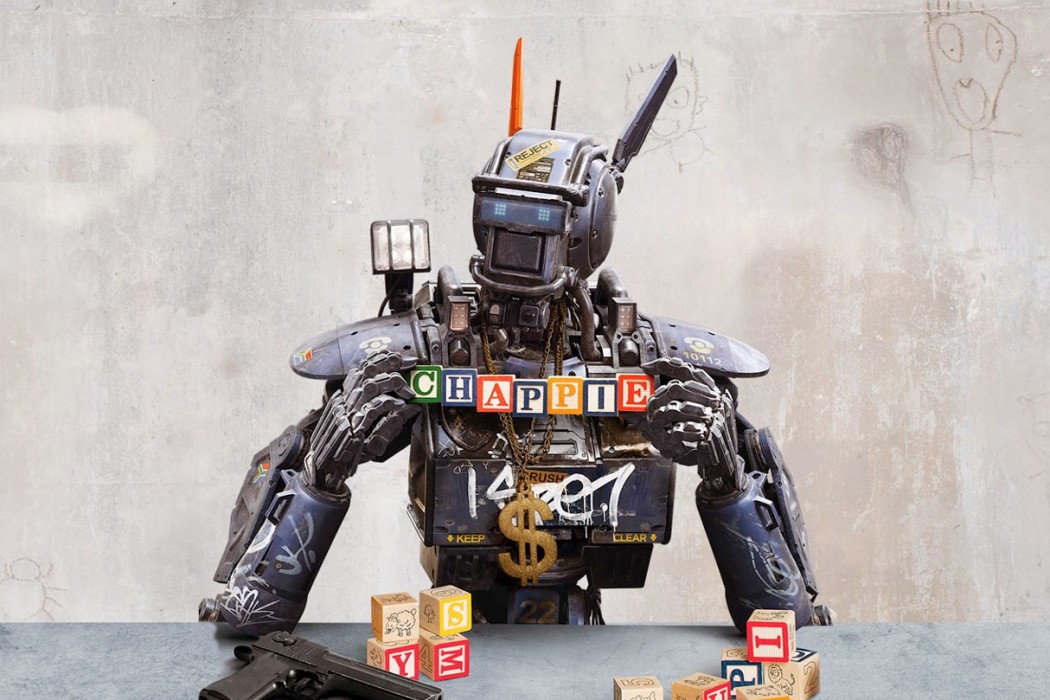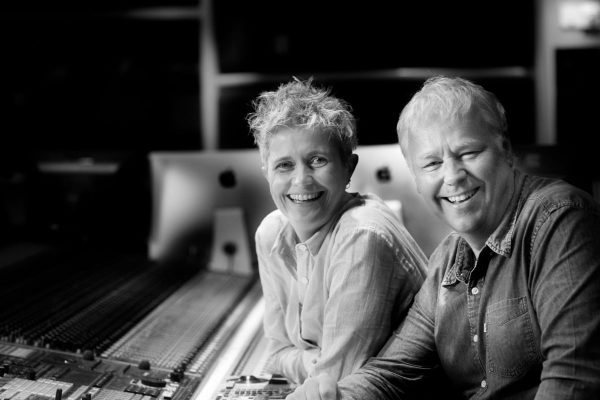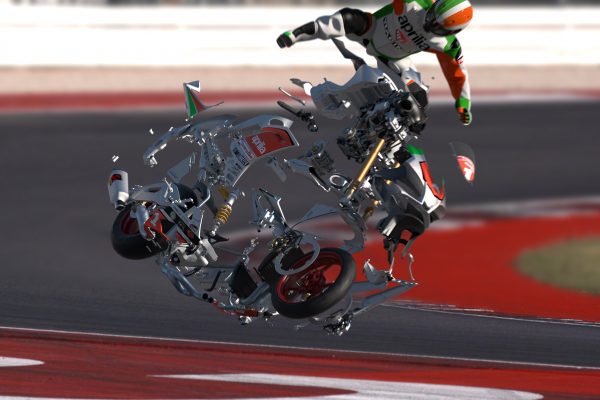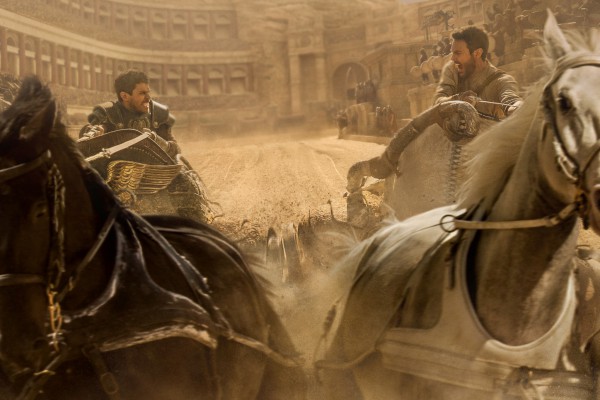Science fiction could be the called the genre of digital art. With the exception of fantasy, sci-fi requires a higher degree of artistic pre-planning in concept art, character design, matte painting, and costumes, more than any other genre. Then add to that all of the creative art behind the make up, visual and practical effects.
By Nicole Boyd
Neill Blomkamp has made a home for himself in the genre. And with the recent news that he’s heading up the Aliens franchise reboot, it shows he has no plans to move out from his sci-fi home anytime soon.
But it’s the examination of social structures found within his dystopian futures that says more about the political backdrop of the director’s own childhood home of Johannesburg, than it does his love for the genre.
Now residing in Canada, Blomkamp grew up in Johannesburg, South Africa. His impressionable teenage years took place during the last days of apartheid (a system of racial segregation) which finally ended in 1994, when the director was 15-years old. Apartheid seems to have made a lasting impression on the filmmaker, with all of his features examining it in some form or other, District 9 – Aliens are segregated, Elysium – poverty and the poor are segregated, and with his latest film CHAPPiE, (to a lesser extent) robots get the boot.
It was during his time at high school, that he befriended his frequent collaborator, actor Sharlto Copley, who has starred in almost all of the writer/director’s projects. In their late teens, Copley encouraged Blomkamp to pursue a career in VFX and 3D CGI animation, by allowing him to use his computers in exchange for free VFX work on the actor’s projects.
The pair’s micro-budget short Alive in Joburg (a precursor for District 9) heavily featured some highly professional VFX by Blomkamp and adopted a documentary-style quality to its cinematography.
Blomkamp interviewed random people for the short, which was spliced into the film as though the person was speaking about the alien creatures, saying:
“I was asking black South Africans about black Nigerians and Zimbabweans. That’s actually where the idea came from was there are aliens living in South Africa, I asked “What do you feel about Zimbabwean Africans living here?” And those answers — they weren’t actors, those are real answers…”
This caught the eye of Jackson, who had hired Blomkamp to come work for Weta.
When a planned live-action Halo film fell through, Jackson suggested a feature-length version of the short, District 9; which to date has made over $210-million and was nominated for an Academy Award. Blomkamp’s next project was the big-budget ($115-million) feature Elysium, starring Matt Damon and Jodie Foster.
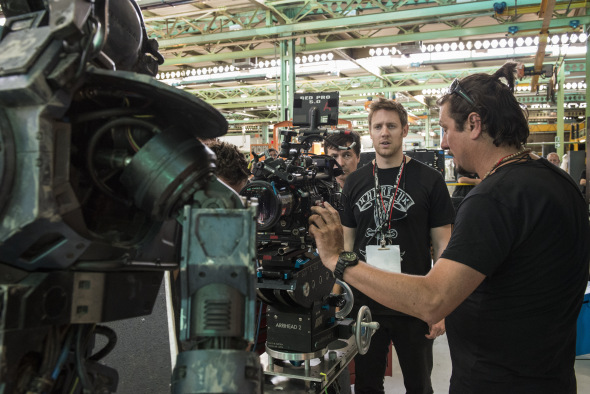
Director Neill Blomkamp and DoP Trent Opaloch shooting with a RED Epic on the set of CHAPPiE (image: Sony Pictures).
His latest feature, CHAPPiE was made with a far more modest budget of $45-million and took the director back to his roots in South Africa.
DP Trent Opaloch shot the film on the RED Epic, telling Definition Magazine:
“There’s a comfort level that Neill and I have with the RED cameras since we shot District 9 on the RED One bodies. We used the RED Epics on both ‘Elysium’ and ‘CHAPPiE’. The Dragon sensor was released for public consumption right before we went into production on ‘CHAPPiE’ but unfortunately we had already run all of our test footage through the post-production pipeline and I didn’t want to gamble on it without enough testing time.”
Blomkamp’s reasoning was a little simpler:
“I just like RED because they’re so helpful to us in production. They’re so cool. And now what is a 6K sensor is like I don’t even need any more unless I’m going to go with IMAX” (source).
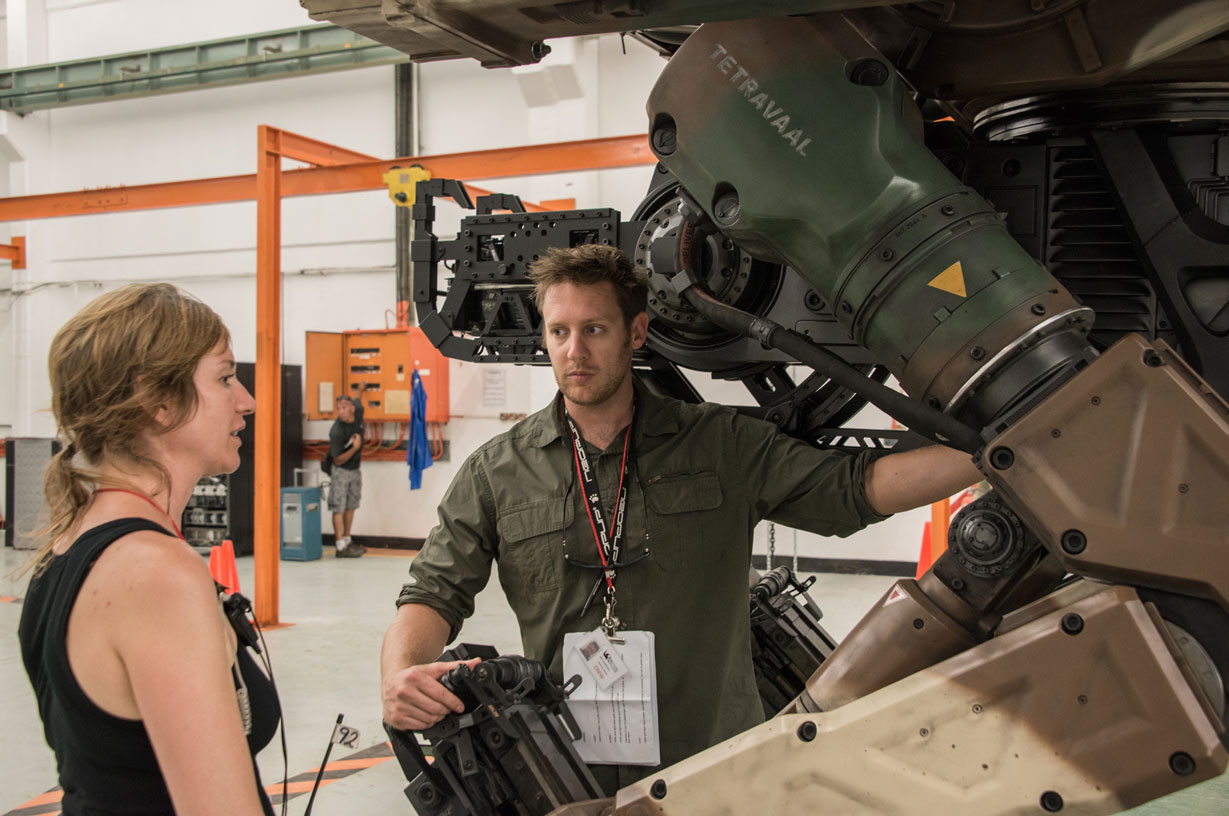
Neill Blomkamp on set (image: Sony Pictures).
The cinematographer paired Panavision Anamorphic lenses C, E and G series to the camera saying,
“There’s a beautiful cinematic quality to Panavision anamorphics that I love so much. It adds a human touch and takes the edge off the digital sensors. I shoot a lot of commercials in between films and bounce between Cooke sphericals and Panavision anamorphics when I can and it’s always nice to throw on a C or G series lens.”
“DIT Richard Mueller and I would time colour reference images pulled from our days work and send these off with the drives,” said Opaloch.
Blomkamp’s hand-held style of shooting can present a host of new challengers to deal with, meaning scenes needed to be approached carefully.
Opaloch said, “The main thing with working with Neill is that he likes you to light the environments as opposed to individual characters with marks like you would normally do. It’s a difficult situation as a cinematographer because you give up a lot of lighting control with that approach but I think there’s a great energy that it allows for in the scene. The actors aren’t pegged down to specific marks and have a bit more freedom than they normally would. The lighting approach must be more general and flexible to work with that. So there’s trade offs for sure but that’s the deal.”
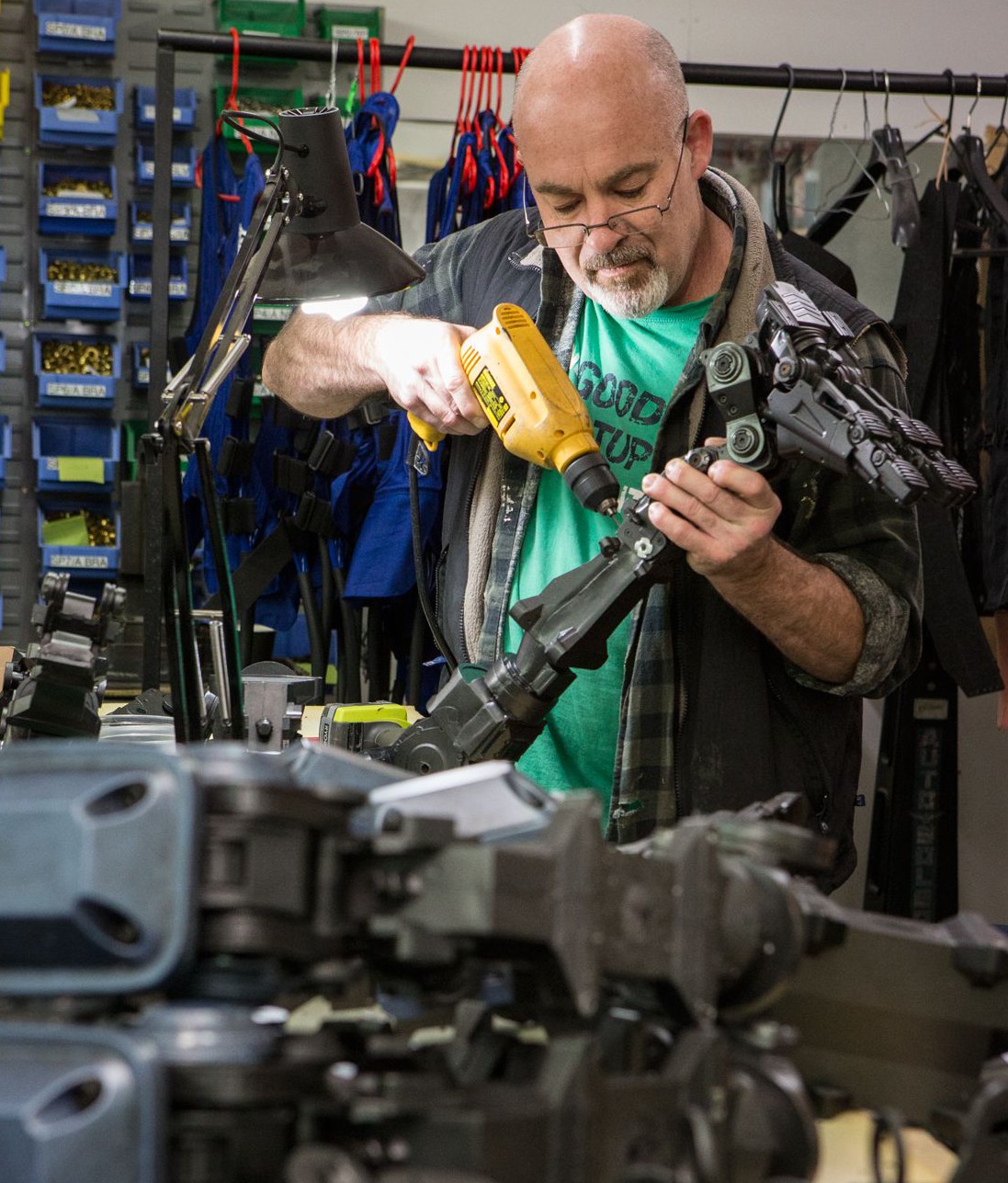
Chappie body parts are constructed at Weta Workshop (image: Steve Unwin).
The robot designs came to life at Weta, based on the directors earlier bipedal robots with ears from his short films Tetra Vaal and Tempbot.
Weta Workshop concept artist Christian Pearce explained to FX Guide,
“Our first designs had ears and for a while Neill went away from them. They were a definite nod to the Appleseed robot Briareos, too. Originally the idea was that the ears were antennae but also radiators to dissipate heat. During the design process we even did some drawings to show how they could be animated to convey emotion.”
“Originally his face was just essentially an LCD screen. We thought we might just put up emoticons like a happy face or sad face, but at some point when they thought about the interaction with the actors, so they decided to put a visor on him that would mimic the idea of eyes,” added concept artist Leri Greer.
Pearce said that the workshop were in the process of packing the character Chappie robot up as a finished mannequin, “when we got this new note from Neill that we needed something human on Chappie since the actors would be looking directly into Sharlto’s eyes. So really quickly, within a few hours, I did a design for the visor.”
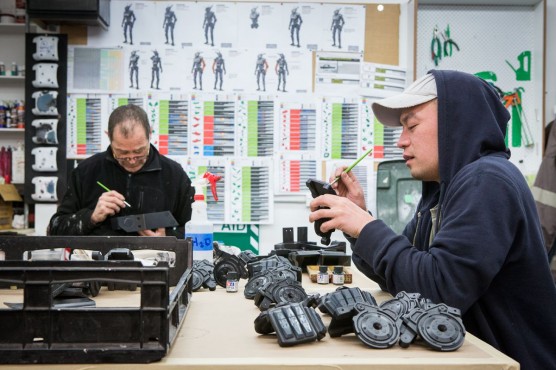
Weta Workshop artists at work on Chappie (image: FX Guide).
Weta and Image Engine collaborated on all the robot designs, including the police scouts, title character and Moose, with IE producing the final design for 3D printing and live action props. In total 19 robots were created in the workshop.
Effects Supervisor Chris Harvey explains:
“We really wanted Chappie to be 100 percent physically accurate in how it works – and no cheating with ball joints. It had to be more mechanical. Every part was printed and snapped together almost. We build some of our own 3D printers and also use an Eden and a ProJet printer off-the-shelf to get super high resolution for small parts.”
Weta Workshop modelmaker supervisor Edward Denton told FX Guide that, “You can either make the physical thing and then match digital after that but on CHAPPiE it’s probably one of the first times we’ve actually got the special effects studio to make the final 3D model. And we had to match that exactly.”
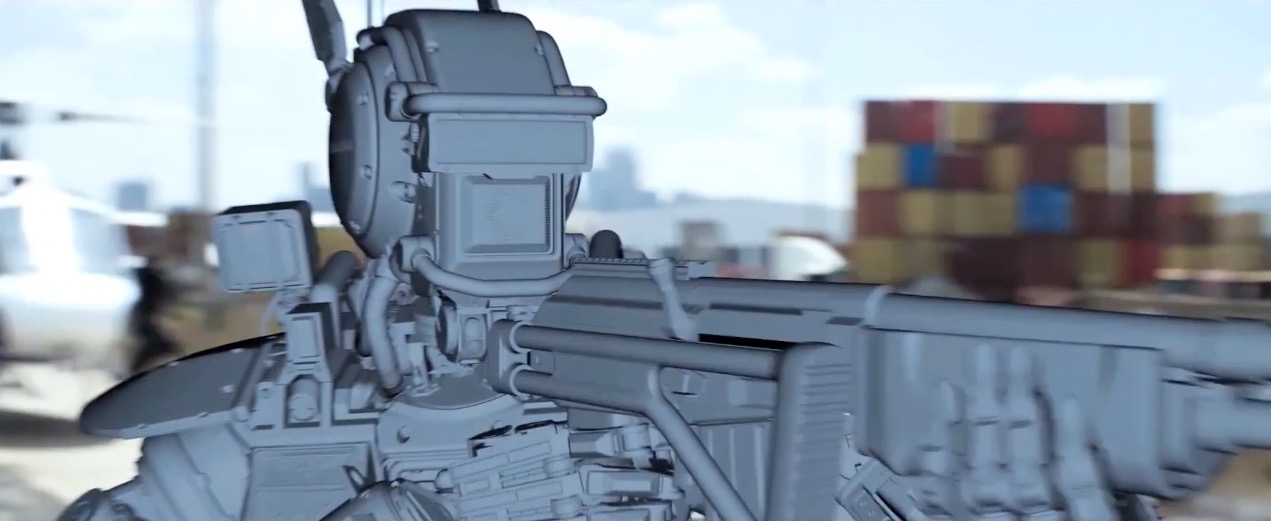
There were times that Sharlto Copley wore a specialised grey suit with tracking markers on the plate, that IE would track and replace in post. Due to the security concerns at some of the locations, Opaloch and the crew had to work quickly, without time to do the usual LIDAR and set scans.
“Weta Workshop created a few chest block pieces so he had the same block shape as Chappie does and to slightly restrict his movement. It gave the other actors the right volume if they were to hug or put their hand on him. He also wore a GoPro on his head the whole time so we could capture his POVs. He had these little wires on his head to provide the camera framing for how big his ears might stick up,” said Harvey.
Copley had to be removed from the entire film, with an incredibly tight deadline to work from. “We had to replace Sharlto with Chappie in every single shot in a two month period – the entire film – in a postvis version,” said Harvey.
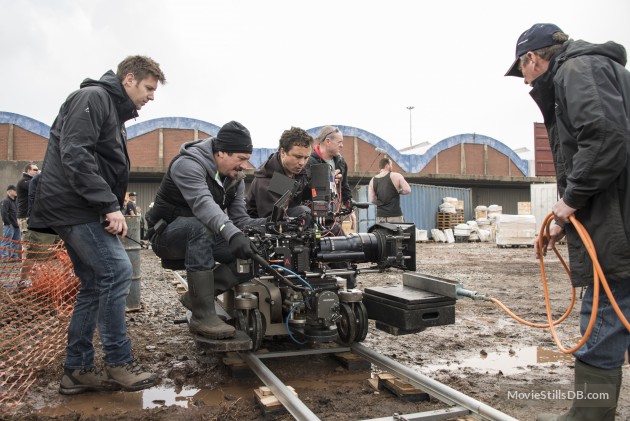
Director Neill Blomkamp and DoP Trent Opaloch, with crew shooting on the RED Epic (image: Sony Pictures).
Every environment that Chappie was in had to be recreated virtually, along with a grey-suited Copley, so that both could be HDRi scanned.
“If he walked through the room all along the path of his movement we did a spatial reconstruction of the lighting as opposed to a single sphere. We’d take those, stitch those together and re-project those back into this low res digital environment. So that gave us a photographic recreation of the set to reflect off Chappie and added a lot to his lighting. We could measure the gray values from the suit against our gray values of Chappie,” explained Harvey.
Imagine Engine Asset Supervisor Barry Poon told FX Guide that overall one master digital asset was created of the character Chappie, with a further 17 in varying states of decay.
“We had multiple arms or chest pieces or heads – any of the pieces that would get damaged throughout the movie – he existed as one large asset with multiple setups. When it got to animation, depending on what state it would be it would show what was necessary. It was the same with lighting. They wouldn’t need to worry about hiding or showing the right pieces – it was a proprietary setup in Shotgun and Maya talking to each other,” Poon said.
Animation took place in Maya, with added effects in Houdini, then rendering in 3Delight with an IE created physical shading setup, and finally composited in NUKE.
For a deeper analysis of the VFX workflow, check out the full FX Guide article, here.
CHAPPiE is currently playing in cinemas, check your local listings for times.
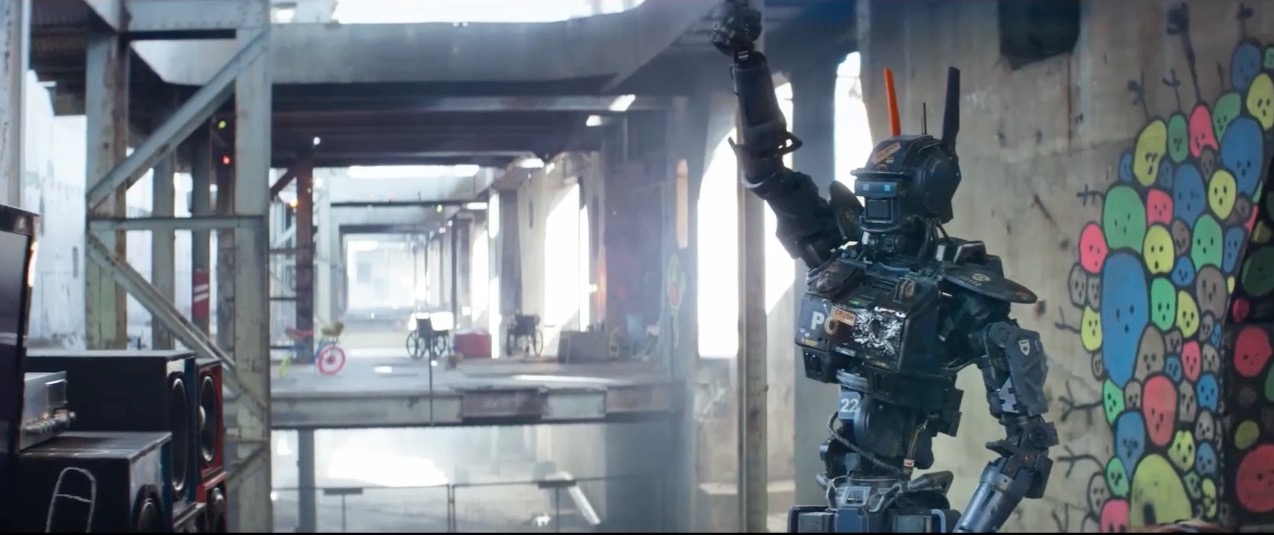
Check out the BTS featurettes below:

